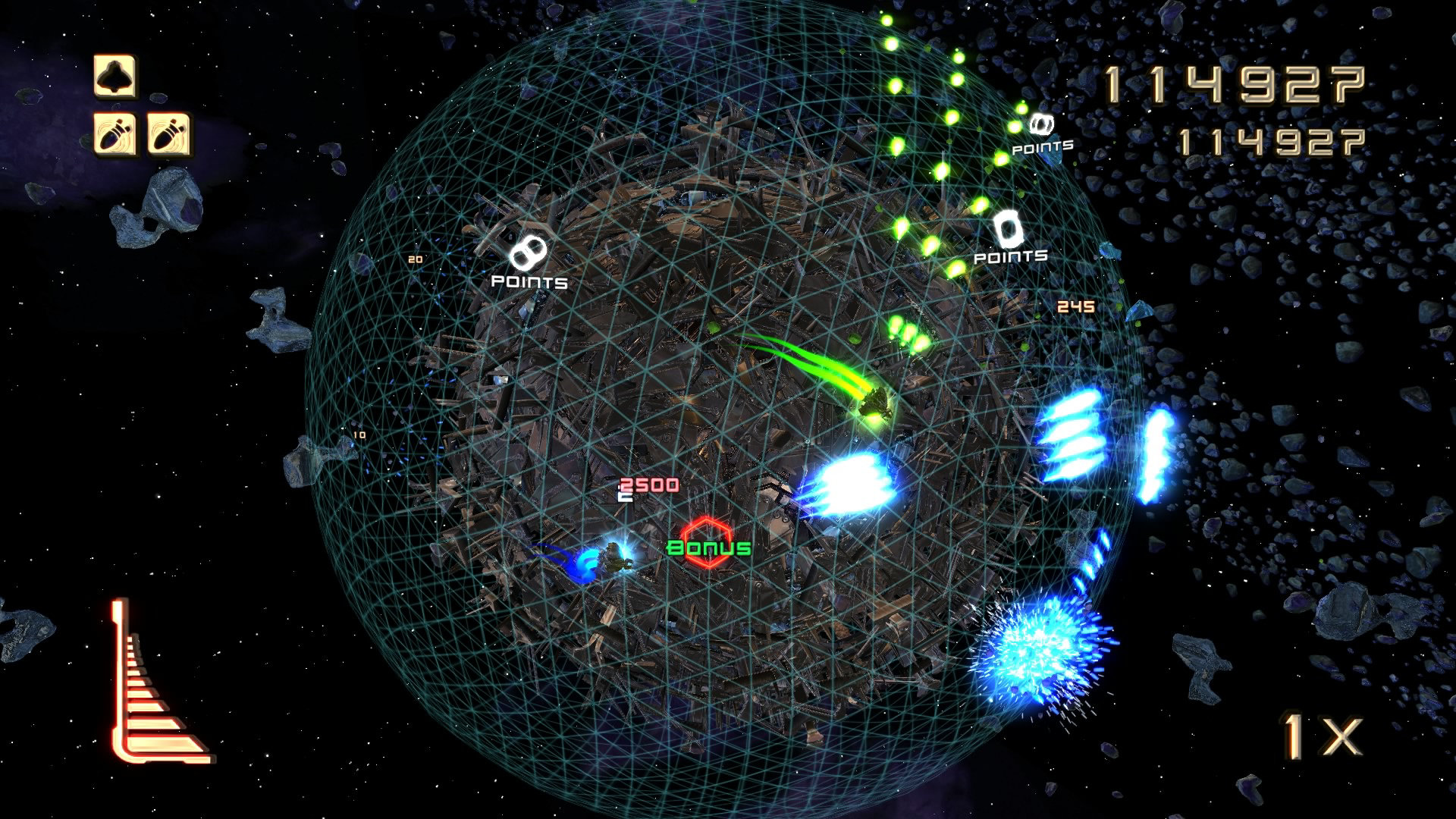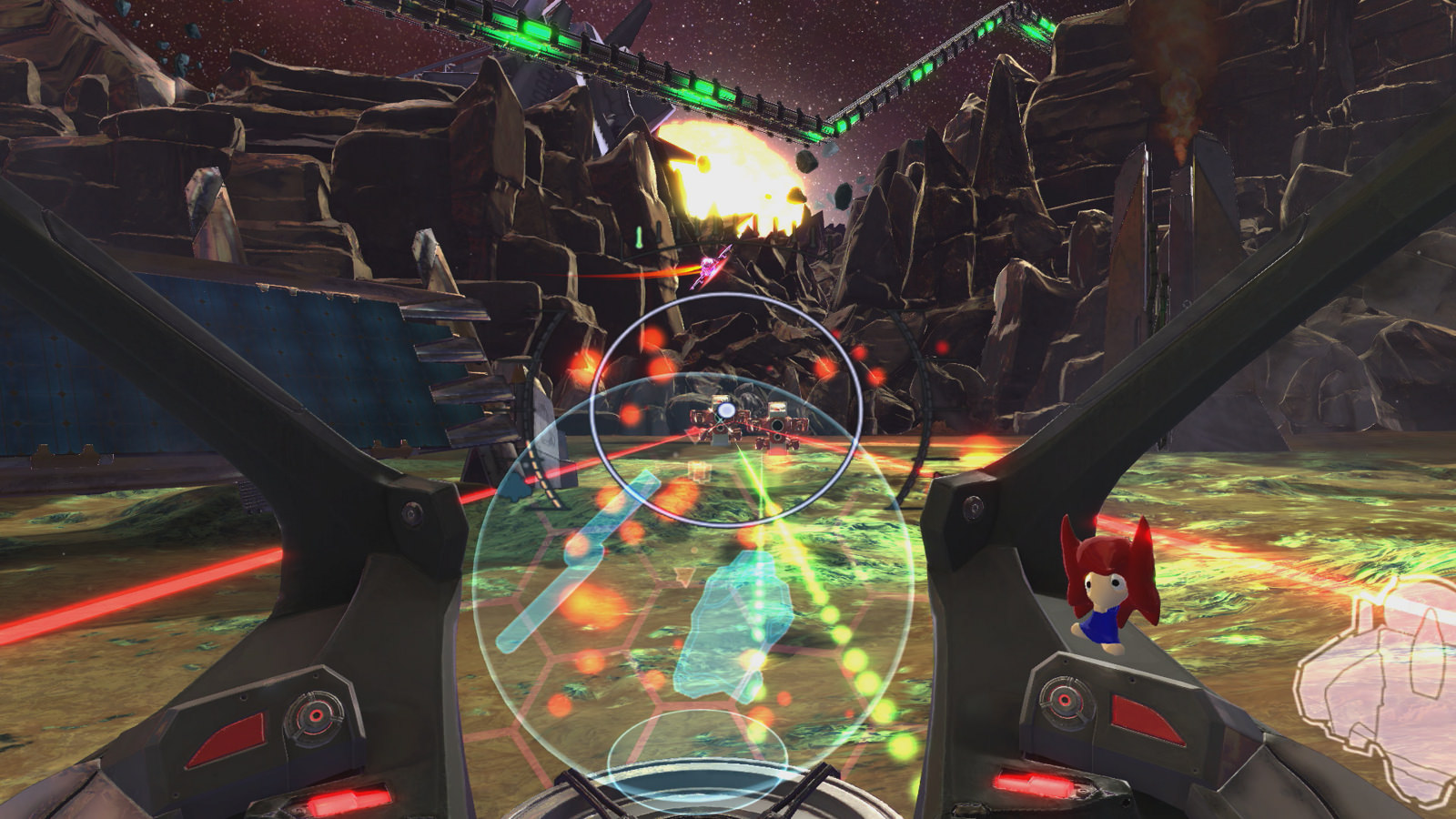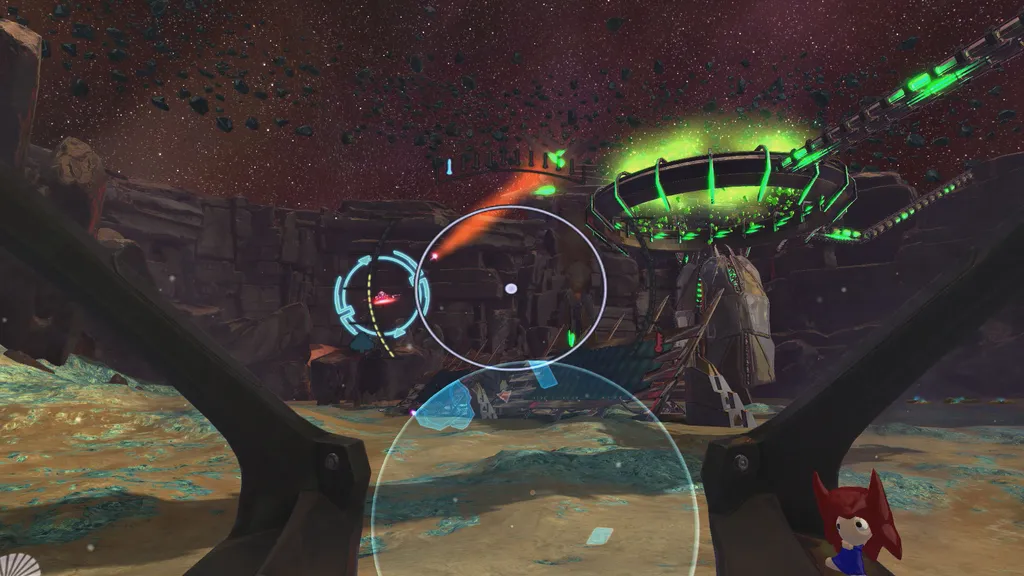We could do a full review of Super Stardust Ultra VR, but it would be a pretty convoluted thing. On one hand, I’d tell you that Housemarque’s incredible arcade classic is still intact in this latest version that graces Sony’s new VR headset. You get the full version of the twin-stick shooter, with tiny worlds that you constantly circle around bulging out in front of you and enemies that explode into gorgeous particles. You gradually lose yourself in the lure of addictive point-scoring gameplay.

On the other hand, you have the part that’s actually designed for VR, Invasion Mode.

This new mode is not developed by Housemarque. Instead, it’s made by a UK-based work-for-hire studio named d3t, a bit like how Sony has previously contracted Bluepoint Games and others to convert its PS2-era titles into HD on PS3. Instead of another third-person offering, Invasion takes you into the cockpit of your fighter for the first time. You find yourself in a small arena, and you fight off enemies in waves.
Here’s the problem: a twin-stick shooter does not work in first-person, especially in VR where the quick turning is likely to induce nausea. So Invasion Mode doesn’t really work like Stardust at all. In fact, it’s a lot closer to Rebellion’s Battlezone, one of the stars of PS VR’s launch line-up. You fire machine guns and lock-on missiles with head-tracked controls, scan a radar for incoming enemies and occasionally unleash EMPs and enemy-sucking disrupters to give yourself a little space.
All that’s well and good — it’s perfectly playable unless you’re prone to motion sickness — but there’s an inescapable element of redundancy here. Not necessarily because there’s already a VR game that does all of this better, but more because the mode is so unrecognizable from the arcade classic it takes its name from. The enemies look the same, but there are no asteroids hovering around the map to break up into hundreds of particles. Instead of biting your lip as you narrowly dodge attacks that will kill you with one hit, you’ll find a health bar that refills with power-ups, robbing you of much of the tension.
There’s not even much to it. I beat Invasion Mode on normal in around 25 minutes or so and, granted, there are other difficulties and it’s designed for replayablity, but the scoring system doesn’t have the same hook as the original game and it’s all set within one map.
It’s a shame d3t hasn’t been able to bring the drug-like addiction of a Housemarque game to PS VR with this updated release but, at the end of the day, that’s probably a job for Housemarque itself. With games like Stardust and Resogun under its belt, this is one developer that we’d love to see release something new and original for the platform, and not just have past successes awkwardly mashed into shape (although the idea of a 360-degree Resogun mode is enticing).
If you’ve owned Stardust before, there’s simply not enough here to warrant a new purchase. That’s especially true if you picked up the PS4 edition of Ultra, which this ultimately feels like DLC for that’s somewhat cynically been turned into its own product. The classic arcade mode can be played on a standard TV still but the overall package is $19.99, whereas the previous edition of Ultra is $12.99. You’re essentially paying $7 for a lackluster VR integration.
Sadly, this is one Stardust that isn’t so super.


























